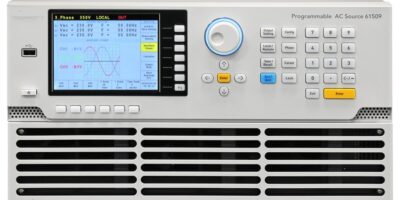Introduction
Organic Light Emitting Diode (OLED) panels represent a significant advancement in display technology, characterized by their ability to deliver superior image quality with deep blacks, vibrant colors, and high contrast ratios. OLED technology has rapidly gained popularity across various applications, from consumer electronics like smartphones and televisions to automotive displays and wearable devices. This overview provides a detailed analysis of the OLED panel market, including its benefits, technological aspects, current trends, demand drivers, challenges, and strategic insights.
Benefits of OLED Panels
- Superior Image Quality: OLED panels offer exceptional image quality with deep blacks and high contrast ratios because each pixel emits its own light and can be individually turned off. This results in true blacks and vibrant colors, providing a more immersive viewing experience.
- Flexible and Lightweight Design: OLED panels can be manufactured on flexible substrates, allowing for the development of curved and foldable displays. Their lightweight nature makes them ideal for portable and wearable devices.
- Wide Viewing Angles: OLED technology provides wide viewing angles with minimal color distortion, ensuring consistent image quality from different perspectives. This feature is beneficial for devices like televisions and smartphones where viewing from various angles is common.
- Energy Efficiency: OLED panels are more energy-efficient than traditional LCDs because they do not require a backlight. Each pixel emits its own light, consuming power only when lit, which is particularly advantageous for battery-powered devices.
- Fast Response Times: OLED panels have faster response times compared to LCDs, making them ideal for applications requiring quick image transitions, such as gaming and video playback. This results in smoother motion and reduced motion blur.
Current Trends
- Adoption of Flexible and Foldable Displays: The trend towards flexible and foldable displays is gaining momentum, driven by innovations in flexible OLED technology. This trend is particularly evident in smartphones and wearable devices, where manufacturers are exploring new form factors and user experiences.
- Expansion in Automotive Displays: OLED panels are increasingly used in automotive displays for infotainment systems, digital dashboards, and head-up displays. Their superior image quality and flexibility enable innovative designs and enhanced user interfaces in vehicles.
- Growth in Large-Screen Televisions: The demand for large-screen OLED televisions is growing due to their ability to deliver superior picture quality and thinner profiles compared to traditional LCD TVs. Consumers seeking high-end home entertainment systems are driving this trend.
- Advancements in Manufacturing Processes: Innovations in OLED manufacturing processes, such as inkjet printing and roll-to-roll production, are reducing production costs and enabling the development of larger and more affordable OLED panels. These advancements are making OLED technology more accessible across various applications.
- Integration with Advanced Technologies: OLED panels are being integrated with advanced technologies such as touch sensors, fingerprint recognition, and augmented reality (AR) capabilities. These integrations enhance the functionality and user experience of devices using OLED displays.
Receive the FREE Sample Report of OLED Panel Market Research Insights @ https://stringentdatalytics.com/sample-request/oled-panel-market/10615/
Market Segmentations:
Global OLED Panel Market: By Company
• SMD
• RiTdisplay Corporation
• Visionox
• Sony
• Chimei Innolux
• AUO
• Pioneer
• Futaba-Former TDK
• LG Display
• Truly
• Univision
• BOE Technology
• Rainbow
• PHILIPS
• Osram
• PIOL
• OLEDWorks
• Sumitomo Chem
• Lumiotec
• Kaneka
• First-O-Lite
• Konica
• NEC Lighting
Global OLED Panel Market: By Type
• Active Matrix
• Passive Matrix
Global OLED Panel Market: By Application
• Military
• Industrial
• Electronic
• Other
Regional Analysis of Global OLED Panel Market
All the regional segmentation has been studied based on recent and future trends, and the market is forecasted throughout the prediction period. The countries covered in the regional analysis of the Global OLED Panel market report are U.S., Canada, and Mexico in North America, Germany, France, U.K., Russia, Italy, Spain, Turkey, Netherlands, Switzerland, Belgium, and Rest of Europe in Europe, Singapore, Malaysia, Australia, Thailand, Indonesia, Philippines, China, Japan, India, South Korea, Rest of Asia-Pacific (APAC) in the Asia-Pacific (APAC), Saudi Arabia, U.A.E, South Africa, Egypt, Israel, Rest of Middle East and Africa (MEA) as a part of Middle East and Africa (MEA), and Argentina, Brazil, and Rest of South America as part of South America.
Click to Purchase OLED Panel Market Research Report @ https://stringentdatalytics.com/purchase/oled-panel-market/10615/
Demand Analysis
- Consumer Electronics: The consumer electronics sector is a major driver of OLED panel demand. The increasing popularity of smartphones, tablets, laptops, and televisions with OLED displays is driven by the desire for superior image quality and innovative designs.
- Automotive Displays: The automotive industry is adopting OLED panels for infotainment systems, digital dashboards, and head-up displays. The demand is fueled by the need for advanced user interfaces and high-quality displays that enhance the driving experience.
- Wearable Devices: Wearable devices, including smartwatches and fitness trackers, benefit from OLED technology’s lightweight and flexible properties. The growing trend towards health monitoring and wearable technology drives the demand for OLED panels in this segment.
- Lighting Applications: OLED panels are used in architectural lighting, automotive lighting, and signage for their energy efficiency and design flexibility. The demand for energy-efficient and aesthetically pleasing lighting solutions contributes to the growth of OLED panels in this sector.
- Industrial Displays: In industrial applications, OLED panels are used for medical monitors, aviation displays, and control panels due to their high contrast and clarity. The demand for reliable and high-quality displays in industrial settings supports the market growth.
Challenges
- High Production Costs: The production of OLED panels involves complex manufacturing processes and expensive materials, leading to higher costs compared to traditional LCD panels. Reducing production costs while maintaining quality remains a significant challenge for manufacturers.
- Limited Lifespan: OLED panels are susceptible to degradation over time, particularly in the blue-emitting organic materials, which can lead to reduced brightness and color accuracy. Addressing the longevity and durability of OLED panels is critical for expanding their adoption.
- Burn-In Issues: OLED panels can experience burn-in, where static images can cause permanent damage to the display, leaving ghost images. This issue poses a challenge for applications requiring static display elements.
- Technical Complexity: The development and manufacturing of OLED panels involve technical complexities, including material uniformity, color consistency, and yield rates. Ensuring high-quality production with consistent performance is challenging for manufacturers.
- Competition from Alternative Technologies: OLED panels face competition from other display technologies such as MicroLED and Quantum Dot (QD) displays, which offer their own advantages in terms of brightness, color accuracy, and energy efficiency. Competing with these technologies requires continuous innovation and improvement in OLED technology.
Strategic Insights
- Investing in Research and Development: Continuous investment in research and development is crucial for advancing OLED technology. Innovations in materials, manufacturing processes, and design can lead to improved performance, reduced costs, and expanded applications.
- Expanding Production Capacity: Expanding production capacity and adopting advanced manufacturing techniques can help reduce costs and meet the growing demand for OLED panels. Investments in new production facilities and equipment can enhance manufacturing efficiency.
- Focusing on Customization: Offering customized OLED solutions tailored to specific applications and customer requirements can provide a competitive edge. Customization in terms of size, shape, and performance can address diverse market needs.
- Exploring Emerging Markets: Targeting emerging markets with growing demand for advanced display technologies can provide new growth opportunities. Regions such as Asia-Pacific, Latin America, and the Middle East & Africa present potential for market expansion.
- Enhancing Durability and Lifespan: Developing OLED panels with improved durability and extended lifespan can address challenges related to degradation and burn-in. Innovations in materials and protective technologies can enhance the reliability and longevity of OLED panels.
About Stringent Datalytics
Stringent Datalytics offers both custom and syndicated market research reports. Custom market research reports are tailored to a specific client’s needs and requirements. These reports provide unique insights into a particular industry or market segment and can help businesses make informed decisions about their strategies and operations.
Syndicated market research reports, on the other hand, are pre-existing reports that are available for purchase by multiple clients. These reports are often produced on a regular basis, such as annually or quarterly, and cover a broad range of industries and market segments. Syndicated reports provide clients with insights into industry trends, market sizes, and competitive landscapes. By offering both custom and syndicated reports, Stringent Datalytics can provide clients with a range of market research solutions that can be customized to their specific needs.
Reach US
Stringent Datalytics
+1 346 666 6655
Social Channels:




Leave a Reply